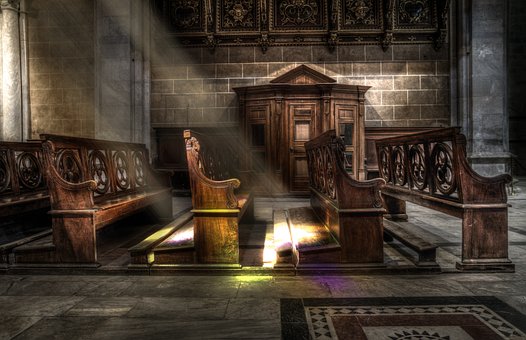by Carlo Favetti
SANTA ANATOLIA DI NARCO (Perugia) – Loving Umbria its beauties its environment its territory. The Umbria of abbeys, churches, monasteries, convents an immense heritage that we will never tire of telling, discovering and spreading. Certainly, there is no doubt that our Valnerina is a valley of jewels immersed in the green of hills and mountains overlooking the course of a river that has a lot of history … it has to tell … and so this time the Abbey of San Felice in Val Di Narco not least in San Pietro in Valle Suppegna and Sant’Eutizio in Valcastoriana di Preci, testifies to the faith and overlapping of styles of art and illustrious personalities of its history.
The building was built on a 6th century oratory (the current crypt) which was transformed in the 11th century. Around, a marshy valley to be reclaimed, here is the work of the cenobites who together with the colonists and pagans gave life to the territory, making it fertile and prosperous, tearing it away from malaria (here is the symbolism of the dragon). The recently restored complex is made up of two buildings. The first the church and the second the monastic complex, now used as a congress center, period residence, exhibition halls. The crypt preserves two small apses and between them a red stone sarcophagus measuring cm
110X50. Four angular acroterae are carved on the lid. In the eighteenth three skulls were found inside. The Crypt is located under the presbytery, in the basement. It is accessed by going down steps; it consists of two aisles supported by a stone column. The column, together with the other four in the walls, supports the arches and the two simple cross aisles. Visibility in the crypt is reduced, given by four small windows in the shape of slits. The upper church can be dated to 1194, as expressed in a code of an ancient Lectionary of the cathedral of Spoleto, where it is written: OFREDUS HUNC FECIT FIERI LIBRUM AD PRIORIS TEMPUS BERARDI PRIMUM QUORUM POSSIDEANT ANIMAE COELUM AD SANCTI HONOREM FELICIS CREDO CUIUS BASILUNICA POLLET CONSTRUCTA IN NARIS RIVO ANNO DOMINI ANNORUM CHRISTI CURRICULA TUNC DUO CENTUM ET MILIA FUERUNT INDE SEX MINUA MENSE APRILIS. The church belongs to the second Spoleto Romanesque style such as the church of Santa Maria in Ponte, San Paolo Inter Vineas, Sant’Eutizio di Preci, San Ponziano di Spoleto, Santa Maria in Lugnano in Teverina. The legend speaks of hermits Siri, Mauro, happy and the nurse. It was a living center of spirituality. Felix performed miracles such as resurrecting the son of a widowed mother. He had the gift of talking to angels. He died on June 16, 535. Even Mauro, after much diligence, died in 555. The church has a single nave shines in its facade adorned with bas-reliefs and sculptures, harmonious for the triple vertical and horizontal partition and rose window: circle inscribed in a square of Umbrian type. The rose window is located inside a denticulated frame with a double series of columns for a total of 48. The symbols of the four evangelists are carved in the corners of the square. The rose window is inserted in a star-shaped mosaic frame. The lateral mullioned windows have twisted columns. The legend of the hermits is carved on the central band: the dragon, San Felice led by the angel who kills the dragon, Mauro in prayer resuscitates the widow’s son. Above, a porticoed decoration adorned with mosaics and shelves carved with animal faces. In the center there is a small shrine with the symbol of the cruciferous lamb. On the external side walls, arched decorations and small slits that act as windows. Inside the walls were all frescoed (now almost entirely disappeared. Some paintings depicting San
Felice killing the dragon, an Adoration of the Magi by Ottaviano Nelli are from the 15th century. Two epigraphs embedded in the floor bear the following writing: MEROPI BENEMERITAE HONORATUS L. QVIESCIT VIX.A. XXVIII MV DEP III ID.IANVAR. CONSULT. Some coats of arms are visible
of the Lauri and Eruli families. An epigraph deals with the Campani family. In the apse the Christ Master of the XIV century is painted. A painter of the Spanish school, Piermarino di Giacomo (ca 1533), was a native of Castel San Felice. Next to the church the ancient convent with monastic buildings and the cloister with the miraculous spring. We have mentioned the Campani family of Castel San Felice. They were opticians, watchmakers, mechanics active in the seventeenth not only in this territory but above all in Rome. They were three brothers Giuseppe, Matteo, Pier Tommaso.

